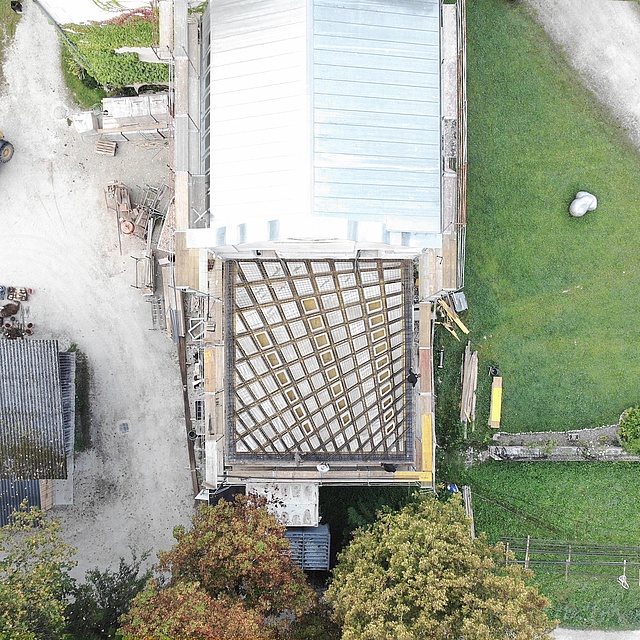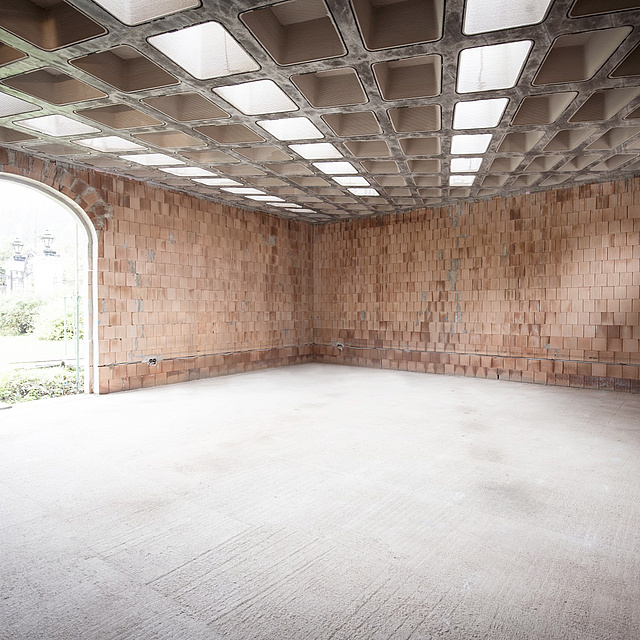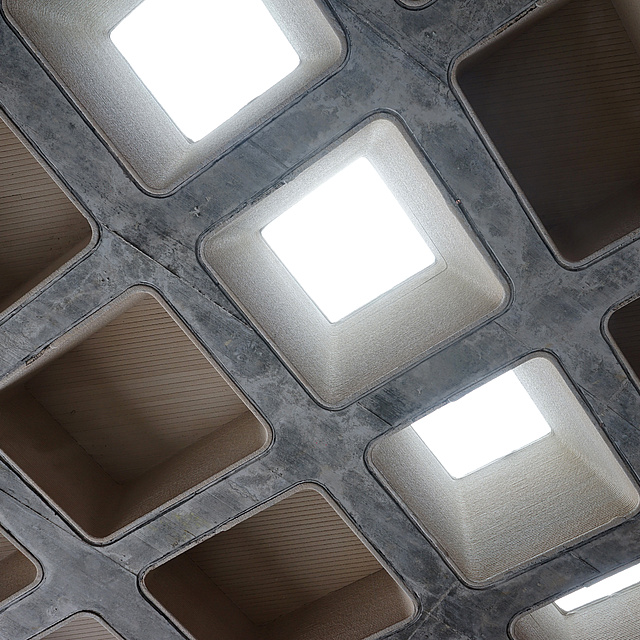Innovative Reinforced Concrete Lightweight Ceiling - Hans Kupelwieser Studio at the Lunz am See palace
In April 2020, the Institute of Structural Design was commissioned to apply this construction method to an approximately 100 square metre rectangular ceiling for a studio room at the Seehof palace in Lunz am See. The project composed firstly of a design, developed in cooperation with Hans Kupelwieser, then the complete execution and detailed planning as well as the implementation of the building project with 130 different 3D-printed recess bodies. The semi-finished parts were produced by the Laboratory for Structural Engineering in Inffeldgasse in the Robotics Lab at Graz University of Technology using a new 3D printing system from the company Baumit, using Baumit PrintCret 230N. After the installation of the finished parts on the construction site, carried out with the expert support of the Gusel company, the novel construction could be revealed at the end of last year. The wide-span ceiling construction is representative of a sustainable attitude towards the use of reinforced concrete, which, among other things, relies on economic, digital production methods to conserve resources.
The Institute of Structural Design (ITE) has been working intensively over the years on various research projects concerning the development of construction methods that enable the optimised use of materials in the building industry. An innovative and promising method to change conventional reinforced concrete construction is additive manufacturing for the production of formwork. The technology for concrete 3D printing was developed at the institute in a previous research project (COEBRO) and this technique was applied in the production of a prototype lightweight ceiling with a weight reduction of 35 percent.



